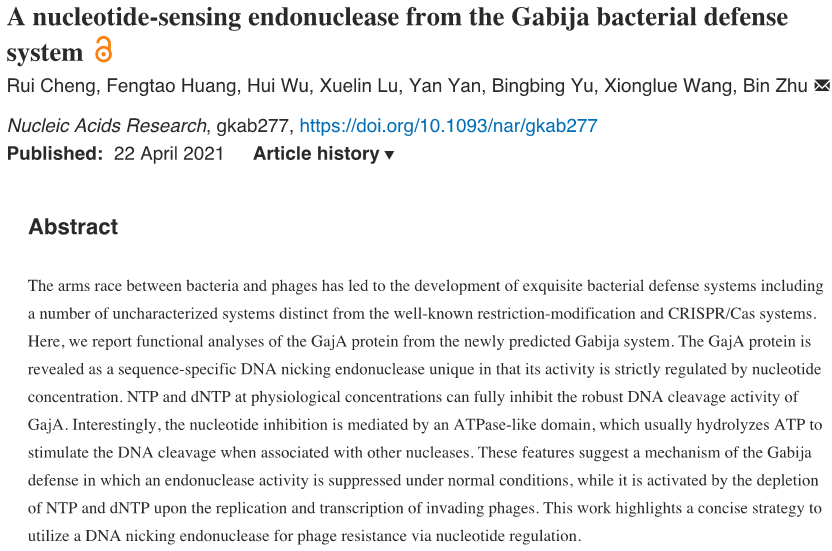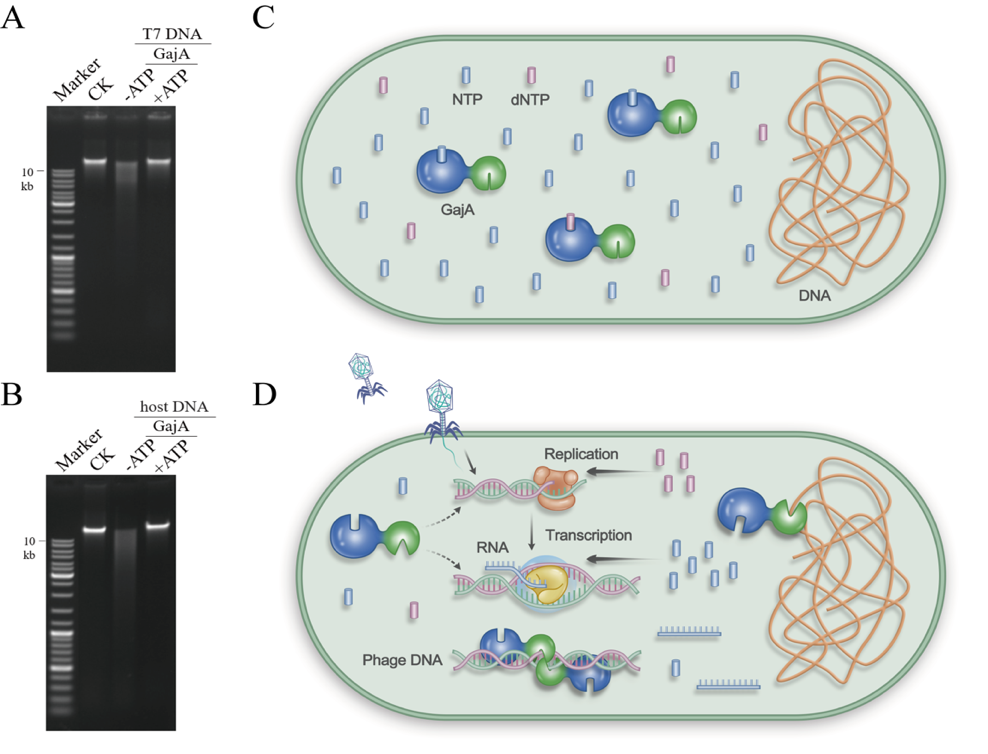April XX, 2021, Professor Bin Zhu group in the College of Life Science and Technology of HUST published a research article titled “A nucleotide-sensing endonuclease from the Gabija bacterial defense system”in Nucleic Acids Research.

Paper link:https://academic.oup.com/nar/advance-article/doi/10.1093/nar/gkab277/6246397?guestAccessKey=952f9520-ce27-4868-b506-760e056433bc
An enormous and endless battle arises between the most dominant organisms—bacteria and their viruses (phages). Although being unobtrusive and invisible, this battle has been a driving force for ecological balance and evolution. Confronting environmental phages tens of times in number, bacteria had evolved exquisite defense systems. Since most of the bacteria defenses target phage DNA, these mechanisms, if resolved, may be applied in biotechnology to manipulate DNA from other organisms. Classic examples are the Noble-winning Restriction-Modification and CRISPR/Cas system, which has led to revolutions in gene engineering and editing, respectively. The huge influence of CRISPR has drawn attentions into other unknown bacterial defense systems. Recently, metagenomic analyses have predicted a large number of potential bacterial defense systems, among them one is the Gabija system named after Lithuanian goddess, which exists in around 8.5% sequenced bacteria and archaea. The Gabija system consists of two genes GajA and GajB, which can render E. coli full protection against virulent phage T7. However, the function of the GajA and GajB protein, as well as the anti-viral mechanism of the Gabija system remain unknown.
Based on long-term research interests and experience on nucleic acids enzymes, Prof. Bin Zhu group reports functional analyses of the GajA protein. The GajA protein is revealed as a sequence-specific DNA nicking endonuclease unique in that its activity is strictly regulated by nucleotide concentration. NTP and dNTP at physiological concentrations can fully inhibit the robust DNA cleavage activity of GajA. Interestingly, the nucleotide inhibition is mediated by an ATPase-like domain, which usually hydrolyzes ATP to stimulate the DNA cleavage when associated with other nucleases. These features suggest a mechanism of the Gabija defense in which an endonuclease activity is suppressed under normal conditions, while it is activated by the depletion of NTP and dNTP upon the replication and transcription of invading phages. Compared to the complicated Restriction-Modification and CRISPR/Cas systems, the Gabija defense is concise and effective.

Dr. Rui Cheng, Prof. Bin Zhu from the College of Life Science and Technology of HUST is the first and corresponding author of this article, respectively. The work is supported by the National Natural Science Foundation of China and Shenzhen Science and Technology Innovation Fund.